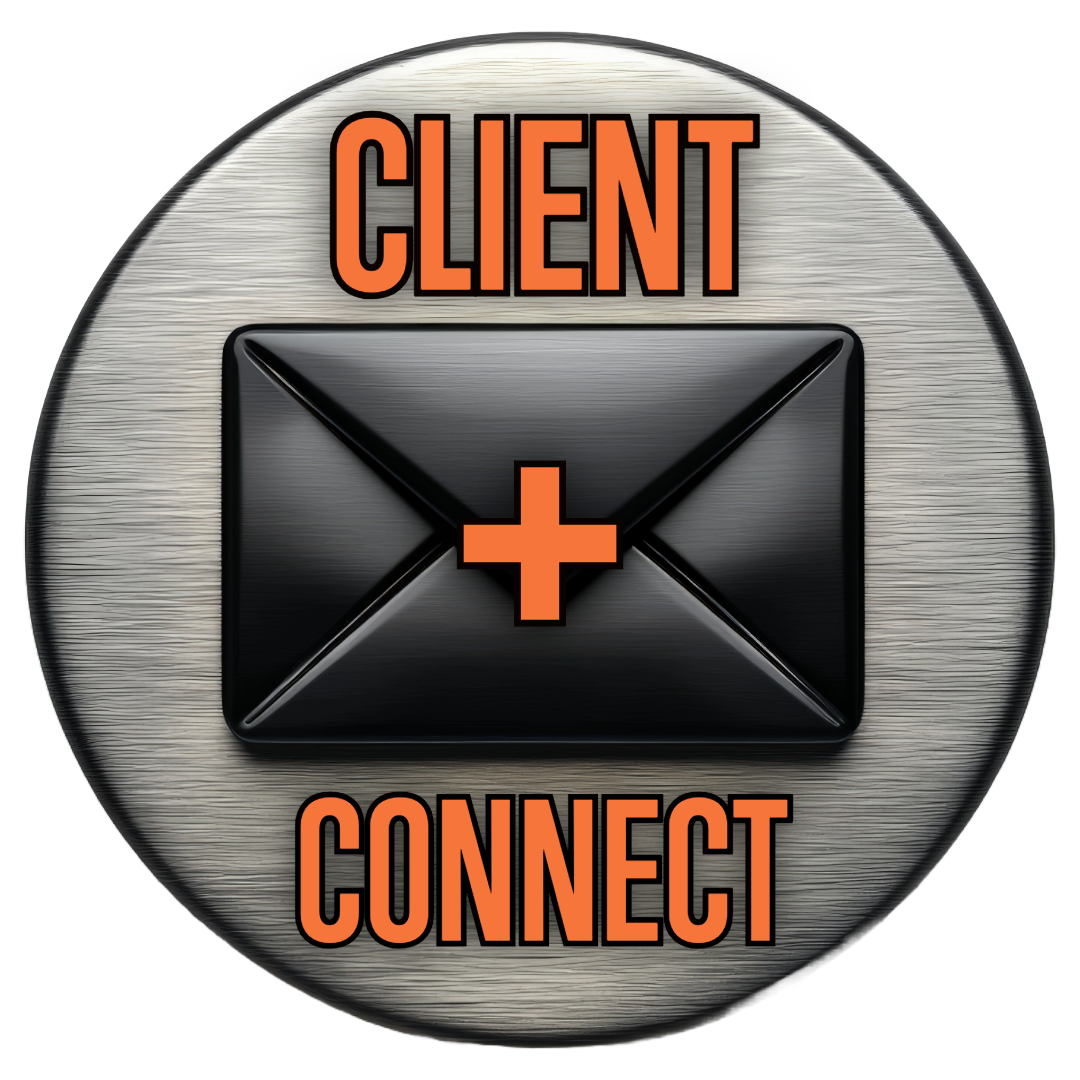Client Outreach 101 for Creative Pros: Why Your Cold Emails Suck
Most creative careers die in the DMs and nobody is talking about it.
If you’re a part-time voice actor or creative dreaming of saying adios to side hustles and make this your full-time reality, you need to hear this: Winning clients doesn’t always mean having the best reel or the slickest portfolio.
It means communicating like a human, not a desperate salesperson. Cold outreach isn’t optional. But almost everyone does it wrong.
Let’s shit-can the misinformation and get honest about what it really takes to break through.
The Reality Check: Why Most Creatives Ignore Outreach and Stay Stuck
The Fear Nobody Admits
The truth is, most part-timers never tell anyone they want to be hired. The idea of reaching out feels desperate, cringey, or worse: scammy or spammy.
But here’s the dirty secret: they’re not scared of hearing no. They’re terrified of being annoying. Rightly so.
Why Waiting for Referrals Kills Your Career
Most new creatives believe if they wait, share enough on social, and just get better at their craft, clients will find them. But in a world flooded with global talent, sitting on your ass and hoping means being completely invisible.
Fact: All the top full-timers you admire are reaching out strategically.
Why Cold Messaging Feels So Hard and How to Flip the Script
The Psychology Behind the Dread
Your lizard brain is wired to avoid rejection. It tallies every unreturned email like a threat.
But if you don’t act… I say it all the time, someone out there with less talent than you is booking more work because they’re taking action and reaching out strategically.
The mindset Shift
Winning creative work is NOT begging. It’s offering value. The minute you start conversations with a mindset of “let me help you solve your problem,” everything changes.
The Four Myths Sabotaging Your Outreach and How to Destroy Them
Myth #1: “I Need a Huge Portfolio”
Reality: You need clarity and relevance, not reams of proof. Pros hire for solutions, not style points.
Your outreach should show you understand their pain points and challenges. If you’re a voice actor, tailor your demo to the genre the client works in. Yes, you need a site, but a professional, targeted demo linked in your email builds more trust than a slick website alone.
Myth #2: “I’ll Seem Desperate or Annoying”
Reality: Sending a generic, shitty “do you hire?” email blast is annoying. Being irrelevant to the person you’re talking to is annoying. Not providing value and not focusing on their problems and pain points is annoying. Asking/begging for work is annoying.
But personalized, laser-targeted, client-focused outreach gets noticed and remembered. You’d be shocked how few messages are truly targeted.
Myth #3: “I Have to Sound Super Professional”
Reality: People want to work with people. Overly formal, stiff, corporate emails get ignored.
Picture the client you want to work with, then write as if you’re sitting next to them at a coffee shop. Be human and friendly and warm, but also be concise and specific. Get to the fucking point.
Myth #4: “If I Don’t Hear Back, I’ve Failed”
Reality: Silence isn’t rejection. The people you want to work with are so busy. Many hires happen on the third or fifth or later follow-up. Persistence, without pestering, is a secret weapon.
Anatomy of a Cold Message That Gets Replies
Break Down the Wall: Personalization First
Understand Your Client Avatars
Start by identifying who your ideal client actually is… demographics, job role, goals, and challenges. Then dig deeper into their motivations, fears, and decision-making triggers to understand why they buy, not just who they are. The goal is to create a vivid, human snapshot that helps you tailor your marketing and messaging directly to their needs.
This is a client avatar. You may have several of them (for example, small agency creative directors, video production managers, etc) and that’s fantastic because specificity counts.
Once you understand them, you can tailor your messaging to them. That specificity signals you’ve done your homework.
Example:
Hey Taylor,
I know projects like yours often need someone who delivers authentic emotion, clarity, and connection, not just reading lines pretty.
Tight turnarounds, last-minute changes, and the need for real listener engagement are challenges I help smaller agency CDs like you solve every day.
Be Clear About What You Offer
You’re not “seeking opportunities.” 🤮 You’re bringing real, tangible, valuable skills to the table that can help them.
Example:
My goal is always to make your workflow smoother and help your content land with impact, whether it’s commercials, product demos, explainers, or internal messaging.
You can hear my demos and download them at mywebsite.com. If you keep a roster of trusted voice talent, I’d love to be considered for upcoming projects.
Wishing you all the best with your current work!
Building Your Target List: Niches, Not Numbers
Who Actually Hires Creatives? (Spoiler: Not Just Agencies)
Start with your dream clients, not just “anyone with money.” Creative pros laser-focus on decision makers in specific niches:
Casting directors for animation
Podcast producers wanting unique voices
Busy YouTubers needing editors or custom music
Internal comms teams at brands you admire
Find the people you genuinely want to partner with.
How to Find the Right Contacts
LinkedIn: Scan for decision makers: producers, directors, creative leads, not generic HR addresses.
Use software like Apollo.io to find targeted leads with verified emails.
Look for warm connections… people you’ve met at workshops, webinars, or online forums.
Crafting Your Irresistible Outreach Message
Your 5-Part Outreach Formula
Understanding (Detailed client avatar)
Focus on Them and Their Problem (“Finding talent who can credibly deliver medical narration”)
Credibility (“I’m a VO and audio editor for financial services podcasts. Demos are [here].”)
Clear Offer (“If you keep a roster of voices or editors, I’d love to help.”)
Human Close (“If you’d like a custom audition, just say the word.”)
What to Do When They Don’t Reply (Because Most Won’t at First)
The Art of Non-Annoying Follow-Ups
Wait a full week. Don’t pounce. Down, boy!
Send a super short nudge: “Have you had a chance to check out my demos?”
Third touch (a few months later): Share a relevant resource or compliment on a recent project.
After about a year of quarterly touch: Let it breathe. Move on, but keep them in your Warm circle.
Persistence Is a Numbers Game, But Heart Wins
Track your outreach (use a CRM, e.g. Hubspot Sales Hub). Tracking will feel thankless until suddenly it’s not. Most hires come from a mix of timely outreach and friendly, insanely consistent follow-up.
How to STAND OUT Even If You’re New or Don’t Have a Huge Resumé
Show Up Differently
Custom Demos: Record a quick paragraph tailored to their style or campaign.
Video or Audio Intros: A 30-sec video greeting. Easy and memorable.
Mutual Connections: Mention any shared network (“I heard about you from Dwight Johnson”), which helps build trust.
Leverage Social Proof (Even if You Have One Client!)
Pull a quote, testimonial, or case study from anything… student project, community theater role, podcast episode you voiced. Having others talk about you is more credible than you droning on about yourself.
Turning Replies into Clients
The Power of a Helpful Mindset
When you do get a reply, do NOT pitch. Thank them for the kindness, offer value without strings attached, and offer to keep in light touch. Leave every client or peer better off than you found them. Be the helpful one.
Stay Top-of-Mind, Even After No, Not Yet, or no response
Send them a relevant article and even one takeaway they can use
Write a blog post that helps that avatar solve a problem and send it to them
Genuinely cheer for their wins on social media
Being a good human builds careers an ordre of magnitude faster than desperate hustle.
What Full-Time Creatives Know That You Don’t (Yet)
They Don’t Wait. They Connect.
Every “overnight success” you see made thousands of connections before the world noticed. The difference between a part-time side-hustler and a booked-out full-timer is proactive communication, done with empathy, enthusiasm, and confidence.
Cold Outreach Isn’t About You. It’s About Them.
Here’s the straight truth: If you want to go full-time as a voice actor, designer, or any creative solopreneur, you have to master the art of client outreach. Stop treating every email as a plea for validation, and start approaching each message like a conversation starter.
The replies, opportunities, and revenue will come, not because you chased harder, but because you connected better.
Take a breath and hit send. The silence in your inbox is just the space before your next big yes.



